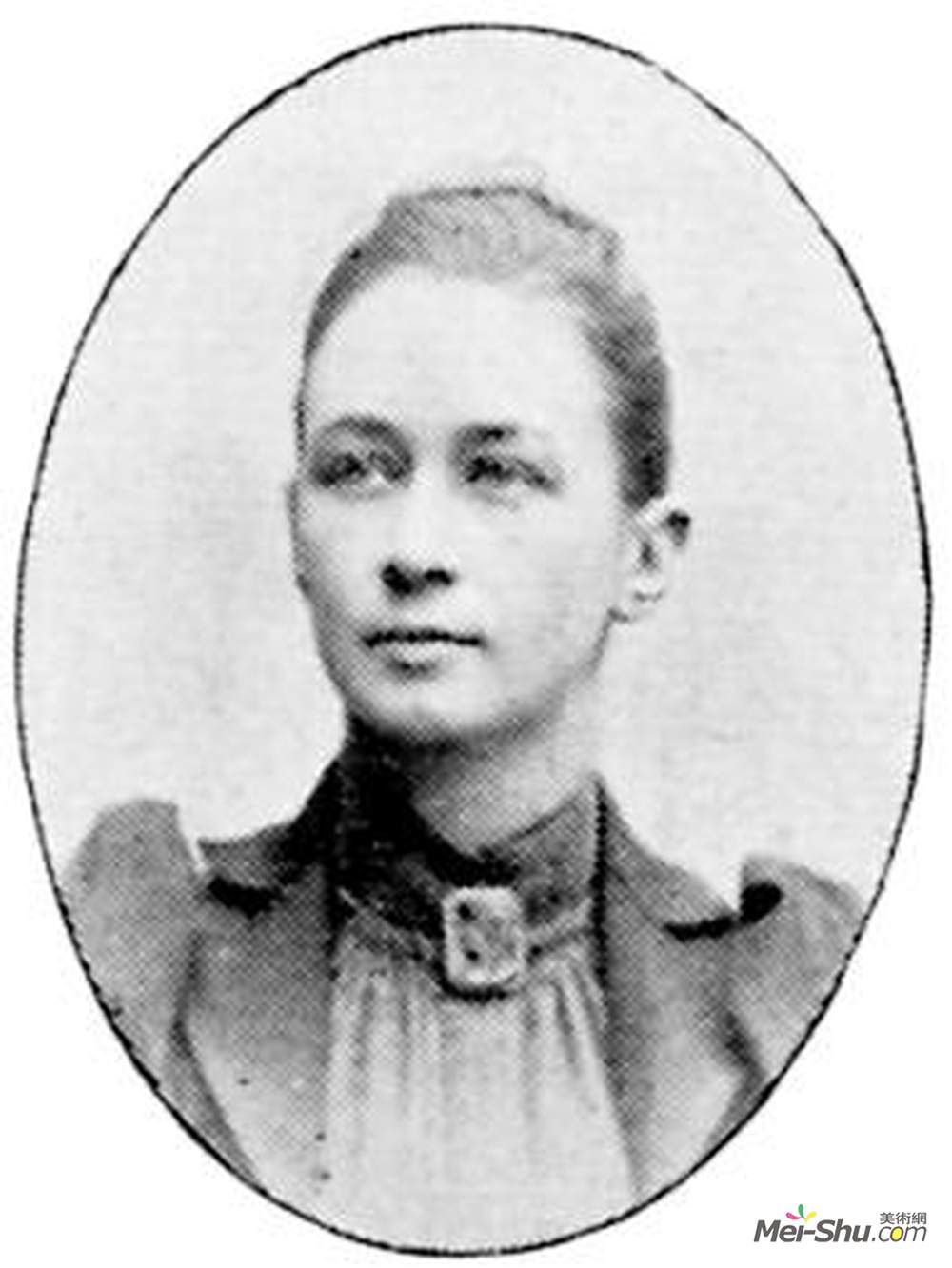
克林特(Hilma af Klint)
艺术家: 克林特
生于: 1862年10月26日;瑞典斯德哥尔摩
卒于: 1944;瑞典
国籍: 瑞典
流派: 抽象主义
领域: 绘画,绘画
Hilma af Klint是瑞典艺术家和神秘主义者,他的绘画属于第一抽象艺术。她属于一个叫做“39”的群体;五和39;绘画或图表是复杂哲学思想的视觉表现。
P >瑞典海军司令Victor af Klint船长的第四个孩子,Hilma af Klint(Mathilda af Klint,e Sonntag,233);Rs与她的家人在他们的农场HAMMORA岛上的Adels&Suff. 246;在M&P湖228;拉伦。在这些田园诗般的环境中,Hilma在她生命的早期就接触到了大自然,这种与自然形态的深层联系是她作品中的一个灵感。1880岁时,她的妹妹哈米娜去世,正是在这个时候,她生命的精神层面开始发展。
她在视觉艺术中表现出了早期的能力,在家庭搬到斯德哥尔摩后,她在ACA学习。五年来,她学习了肖像画和山水画。在这里,她遇见了Anna Cassel,她在她后来工作过的四个女人中的第一个;五和39;(DeFEM),一群分享她的想法的艺术家。她更为传统的绘画成为她经济收入的来源,而“安培生活”的作品仍然是一个相当独立的实践。参与其中的项目,在1892年,在一本书中记录了一个全新的神秘体系。我的思想来自于更高精神的信息。格雷戈尔这样说:"所有不属于感官的知识,不属于智力的知识,不属于心灵的知识,而是只属于你生命最深处的知识。作品平行于其他艺术家,如蒙德里安、马尔维希和康定斯基的抽象艺术的发展,他们像阿夫·克林特一样,受到布拉瓦茨基夫人创立的神学运动的启发。在20世纪初,现代主义者在艺术、精神、政治和科学系统中寻求新形式的大背景下也可以看到阿芙·克林特的作品。早在1896年c绘画,引导她走向一种创造性的几何视觉语言,能够概念化的无形力量的内在世界和外在世界。这些画除了它们的图解用途外,还具有新意和现代美学的试探性线条和匆忙捕捉的图像:一个分割的圆,一个螺旋,被平分并分成浅色的光谱。她继续多产地增加了超过1000件的工作直到1941。她要求在她生命结束20年后才显示出来。
Artist :Hilma af Klint
Additional Name :Hilma af Klint
Born : Stockholm, Sweden
Died : Sweden
Nationality :Swedish
Art Movement :Abstract Art
Field :painting,drawing
Hilma af Klint was a Swedish artist and mystic whose paintings were amongst the first abstract art. She belonged to a group called 'The Five' and the paintings or diagrams were a visual representation of complex philosophical ideas.
The fourth child of Captain Victor af Klint, a Swedish naval commander, and Mathilda af Klint (née Sonntag), Hilma af Klint spent summers with her family at their farm Hammora on the island of Adelsö in Lake Mälaren. In these idylic surroundings Hilma came into contact with nature at an early stage in her life and this deep association with natural forms was to be an inspiration in her work. From her father she adopted an interest in mathematics.
In 1880 her younger sister Hermina died and it was at this time that the spiritual dimension of her life began to develop.
She showed an early ability in visual art and after the family had moved to Stockholm she studied at the Academy of Fine Arts for five years during which time she learned portraiture and landscape painting . Here she met Anna Cassel, the first of the four women with whom she later worked in 'The Five' (de fem), a group of artists who shared her ideas. Her more conventional painting became the source of her financial income while the 'life's work' remained a quite separate practice.
The project on which "the Five" were engaged involved, in 1892, recording in a book a completely new system of mystical thought in the form of messages from higher spirits. One, Gregor, spoke thus: "all the knowledge that is not of the senses, not of the intellect, not of the heart but is the property that exclusively belongs to the deepest aspect of your being...the knowledge of your spirit".
It is interesting to note that af Klint's work ran parallel to the development of abstract art by other artists such as Mondrian, Malevich and Kandinsky who were, like af Klint, inspired by the Theosophical Movement founded by Madame Blavatsky. Af Klint's work can also be seen in the wider context of the modernist search for new forms in artistic, spiritual, political and scientific systems in the beginnings of the 20th century.
Through her work with the group 'the Five' af Klint created experimental automatic drawing as early as 1896, leading her towards an inventive geometric visual language capable of conceptualising invisible forces both of the inner and outer worlds. Quite apart from their diagrammatic purpose the paintings have a freshness and a modern aesthetic of tentative line and hastily captured image: a segmented circle, a helix bisected and divided into a spectrum of lightly painted colours. She continued prolifically to add to the body of work amounting to over 1000 pieces until 1941. She requested that it should not be shown until 20 years after the end of her life.